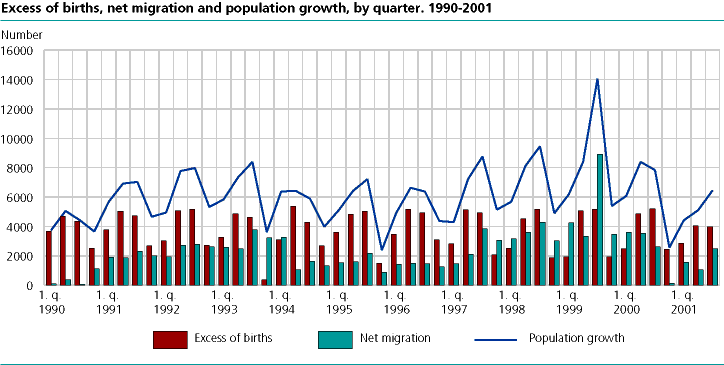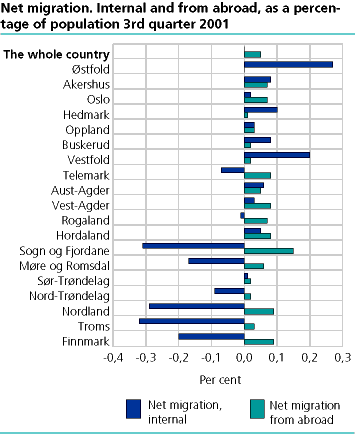Content
Published:
This is an archived release.
Decrease in births
So far this year there has been 43 900 births. This is the lowest recorded figure for this period since 1987. So far this year the population has increased by 16 000 persons and this represents the lowest growth since 1990.
The population growth for the third quarter has so far been roughly 6 400 persons, according to preliminary figures for the third quarter.
By the 1st of October 2001 approximately 4 519 400 persons lived in Norway. So far this year the population has increased with 16 000 persons, this represents a decrease of 6 300 persons compared with the same period last year and roughly 5000 fewer than the mean population growth the last ten years. This is mainly due to substantial lower immigration, whilst the number of emigrants has been more or less stable.
Lowest number of births since 1987
Both last year and throughout the 1990s the birth numbers for the three first quarters have been stable round 45 000. So far this year there has been 43 900 births. Compared with the same period for earlier years these are the lowest numbers since 1987.
The number of births have also decreased by nearly 2 000 compared with the same period last year, while the death numbers are stable. In combination these two factors - fewer births and lower migration - have led to a decrease in the population growth.
The Swedish and the Kosovo Albanians are moving out
So far this year there has been a net migration of respectively 300 Swedish and 1200 Yugoslavians. The Swedish represent both the larges group of immigrants and migrants with respectively 2 300 immigrations and 2 600 migrations. The large migration of Yugoslavians consist mainly of Kosovo Albanians who are migrating due to expiration of their temporal protection permits.
The statistics is published with Population.
Contact
-
Statistics Norway's Information Centre
E-mail: informasjon@ssb.no
tel.: (+47) 21 09 46 42


